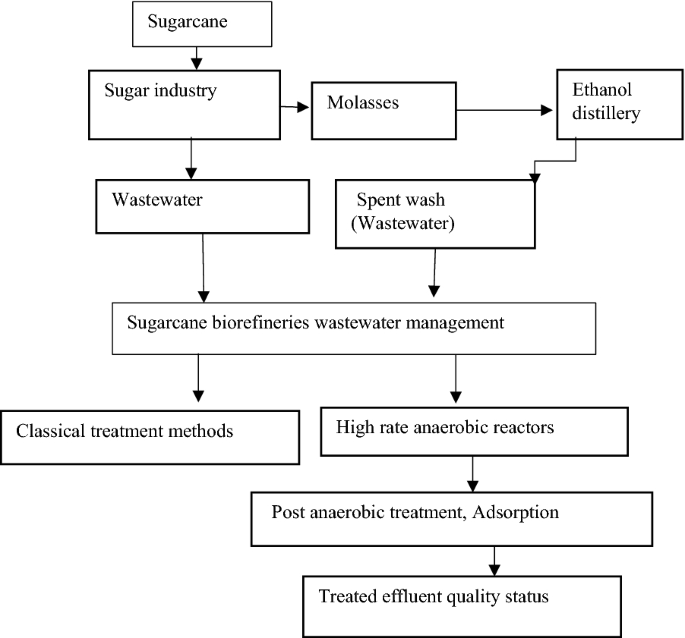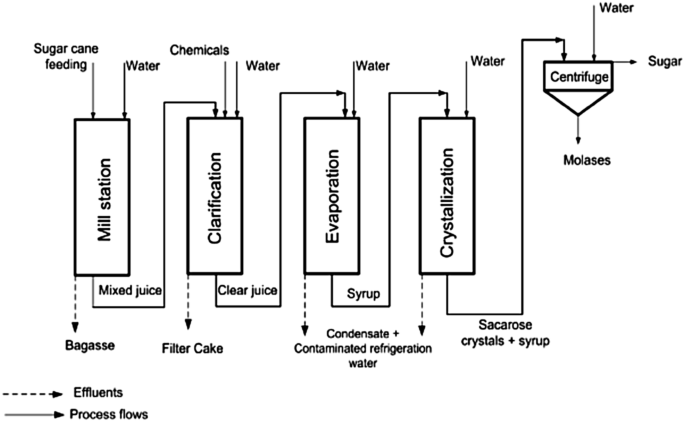How Products From Sugarcane Support Local Agriculture and Jobs
How Products From Sugarcane Support Local Agriculture and Jobs
Blog Article
Discover the Cutting-edge Advantages of Products From Sugarcane for Lasting Living
Sugarcane has become a pivotal resource in the pursuit for sustainable living. Its varied applications span eco-friendly packaging, sustainable power, and much healthier food alternatives. As sectors seek eco-friendly choices, sugarcane's versatility provides encouraging solutions. The real potential of sugarcane extends beyond its present usages. Exploring its cutting-edge advantages could disclose new paths toward an extra lasting future. What various other opportunities might this exceptional plant hold?

The Increase of Sugarcane as a Lasting Source
As worldwide understanding of ecological concerns expands, sugarcane has emerged as a famous sustainable resource. This flexible plant supplies a selection of benefits that add to environmentally friendly practices. Sugarcane is a renewable source, capable of growing in diverse climates while taking in carbon dioxide, thereby mitigating greenhouse gas emissions. Its quick development cycle allows for regular harvesting, resulting in a continuous supply of raw material.Additionally, sugarcane growing often requires much less water compared to various other crops, making it an efficient choice in water-scarce regions. The spin-offs of sugarcane, such as bagasse and molasses, can be repurposed for different applications, lowering waste and promoting circular economic climate principles. Additionally, improvements in farming methods have caused even more lasting farming methods, further improving sugarcane's ecological account. As customers significantly seek sustainable options, sugarcane attracts attention as a feasible alternative for those devoted to minimizing their environmental footprint.
Naturally Degradable Product Packaging Solutions
How can eco-friendly product packaging options change the way consumers approach sustainability? By making use of sugarcane-based materials, these innovative services use a compelling choice to typical plastics. Eco-friendly product packaging made from sugarcane disintegrates naturally, noticeably reducing land fill waste and greenhouse gas exhausts. As consumers become increasingly familiar with their ecological effect, the demand for lasting product packaging remains to rise.These sugarcane-derived products not just serve useful purposes yet also straighten with eco-conscious customer values. They supply a tangible means for individuals and organizations to add to a round economic climate, promoting source effectiveness and reducing environmental impacts. Furthermore, as sectors take on eco-friendly options, they cultivate a culture of sustainability that resonates with an expanding demographic seeking accountable choices.In significance, biodegradable product packaging remedies from sugarcane represent a vital advance in lasting practices, empowering customers to make ecologically pleasant decisions without compromising benefit or quality.
Renewable Energy Generation From Sugarcane
A substantial part of renewable resource generation can be originated from sugarcane, showcasing its versatility past traditional agricultural uses. Sugarcane biomass, consisting of bagasse and leaves, is a potent source for bioenergy manufacturing. This biomass can be converted into biofuels such as ethanol, which works as a cleaner choice to fossil fuels. Furthermore, the combustion of sugarcane results produces heavy steam and electricity, giving an energy resource for sugar mills and neighboring communities.The farming of sugarcane also adds to carbon sequestration, as the plants take in co2 throughout their development cycle. By using sugarcane for energy, waste is decreased, and lasting methods are motivated. This sustainable energy technique not only supports power demands but also advertises country development, producing tasks in bioenergy fields. Generally, sugarcane stands out as an essential player in the change to lasting energy solutions, lining up with worldwide efforts to reduce carbon impacts.

Eco-Friendly Textiles and Fabrics
Environment-friendly textiles and materials stemmed from sugarcane provide an appealing choice to standard materials. These biodegradable alternatives not only minimize environmental impact however also use durability and performance comparable to conventional textiles. Sustainable manufacturing processes further enhance their charm, making them an essential component of a lasting way of living.
Eco-friendly Fabric Choices
Why is the adjustment toward eco-friendly textile choices necessary for sustainable living? The raising awareness of ecological degradation has motivated a search for alternatives to conventional fabrics, which usually add to air pollution and waste. Biodegradable materials, derived from eco-friendly resources such as sugarcane, offer an appealing solution. These products break down normally, reducing garbage dump buildup and reducing environmental effect. In addition, they can help lower carbon impacts and dependence on nonrenewable fuel sources. As consumers become a lot more eco-conscious, the need for sustainable textiles grows, motivating manufacturers to innovate and invest in naturally degradable options. This adjustment not just supports sustainable methods however also promotes a round economy, leading the way for a more accountable technique to fashion and fabric manufacturing.
Sturdiness and Efficiency
When reviewing eco-friendly textiles and materials, sturdiness and performance are vital elements. Sugarcane-derived products show excellent toughness and resilience, making them suitable for numerous applications. These textiles usually exhibit superior moisture-wicking residential properties, which improve comfort in everyday wear. Additionally, their natural fibers contribute to breathability, making certain that garments continue to be fresh and wearable even sought after conditions. The efficiency of sugarcane-based materials reaches their resistance to use and tear, enabling items to maintain their honesty in time. Moreover, these green fabrics can be treated to improve UV security and tarnish resistance, fulfilling the practical demands of customers without compromising sustainability. Eventually, sugarcane textiles provide an unified balance of sturdiness and efficiency, attracting ecologically aware individuals.
Sustainable Manufacturing Procedures
The excellent sturdiness and performance of sugarcane-derived fabrics are complemented by sustainable manufacturing processes that focus on environmental responsibility. These procedures make use of renewable energies, decreasing dependence on fossil fuels and reducing carbon footprints. By using the byproducts of sugarcane growing, producers can develop environmentally friendly materials while advertising waste decrease. Advanced methods, such as water-efficient dyeing and eco-friendly therapies, additionally boost the sustainability of these fabrics. Furthermore, using non-toxic chemicals guarantees that the production process does not harm communities or human health. This dedication to sustainability not only interest environmentally mindful customers however likewise supports neighborhood economic climates by advertising browse this site sustainable farming practices. In general, sugarcane-derived textiles represent a significant action towards a greener future in the fashion business.
Sugarcane-Based Biofuels and Their Influence

Sugarcane-based biofuels have become a considerable different energy resource, providing a sustainable remedy to the globe's expanding energy needs. These biofuels, stemmed from the fermentation of sugarcane juice or molasses, provide an even more sustainable option contrasted to nonrenewable fuel sources. Their production process produces reduced greenhouse gas emissions, adding to climate modification reduction efforts.Additionally, sugarcane biofuels can improve energy security by branching out power resources and reducing dependence on imported oil. The growing of sugarcane also promotes country advancement, creating tasks and boosting regional economies.However, concerns pertaining to land use and food competition continue, as enhanced biofuel production might affect food supply chains. Lasting farming techniques are essential to balancing these completing interests and ensuring that biofuel manufacturing does not threaten food security. On the whole, sugarcane-based biofuels stand for a promising method for a greener energy future, offered that their environmental and social implications are thoroughly handled.
Much Healthier Alternatives: Sugarcane in Food Products
While numerous consumers seek healthier choices in their diet plans, sugarcane products supply a nourishing option to fine-tuned sugars and man-made sugar. Derived from the natural extraction of sugarcane juice, these items retain crucial nutrients, including minerals and vitamins, that are frequently lost in processed sugars. Sugarcane consists of anti-oxidants and nutritional fiber, adding to general health and wellness and wellness.Many health-conscious individuals are turning to sugarcane syrup and jaggery, which supply a lower glycemic index compared to conventional sugars, making them suitable for those taking care of blood sugar degrees. Furthermore, sugarcane-derived sweeteners can enhance the flavor of numerous recipes without the negative impacts related to fabricated additives.This shift in the direction of natural sweetening representatives not only promotes better nutritional options however also straightens with lasting living techniques, as sugarcane is a renewable energy. Sugarcane products are arising as beneficial options in the domain name of food products.
The Future of Sugarcane in Sustainable Developments
The future of sugarcane is positioned to incorporate cutting-edge applications that prolong beyond typical uses. Its possible as a source for naturally degradable product packaging services and renewable resource sources highlights its function in sustainable techniques. Exploring these improvements could considerably influence ecological conservation and resource monitoring.
Eco-friendly Product Packaging Solutions
An enhancing number of firms are turning to naturally degradable product packaging options stemmed from sugarcane as an appealing alternative to standard plastics. These cutting-edge materials, typically made from sugarcane fibers and bioplastics, decompose naturally, lowering the long-lasting ecological influence related to standard plastic waste. By making use of renewable energies, sugarcane-based product packaging adds to a more sustainable manufacturing cycle, aligning with global efforts to fight pollution and environment adjustment. Furthermore, these remedies usually preserve the durability and functionality required for various applications, from food containers to delivery materials. As customer need for environmentally friendly choices grows, organizations taking on sugarcane product packaging not just improve their brand name photo however additionally play a crucial function in cultivating a round economic situation, leading the means for a greener future.
Renewable Energy Sources
Eco-friendly packaging services are just one aspect of the wider capacity of sugarcane in promoting sustainability. One more considerable application lies in renewable energy resources. Sugarcane is a functional plant that can be made use of to generate biofuels, such as ethanol, which acts as a cleaner choice to nonrenewable fuel sources. The fermentation procedure of sugarcane juice yields ethanol that can power vehicles and generate electrical energy. Furthermore, the by-products of sugarcane handling, like bagasse, can be made use of to produce biomass energy, supplying a lasting and effective method to harness power. This double role as both a resource of biofuel and biomass highlights sugarcane's potential in decreasing carbon exhausts and sustaining a shift to an extra sustainable energy landscape in the future.
Often Asked Inquiries
How Is Sugarcane Collected Sustainably?
Sugarcane harvesting can be lasting through strategies like hands-on cutting, which minimizes dirt disturbance, and using equipment that minimizes fuel usage (Products From Sugarcane). Plant turning and incorporated bug administration further boost ecological health and advertise long-term soil fertility
What Are the Ecological Effects of Sugarcane Farming?

Can Sugarcane Products Be Reused?
The inquiry pop over to this site of whether sugarcane products can be recycled reveals a positive overview. Many sugarcane-derived products, such as bioplastics and packaging, are created for recyclability, adding to a much more lasting waste administration technique within ecological considerations.
Are There Any Type Of Disadvantages to Utilizing Sugarcane-Based Products?
The disadvantages of using sugarcane-based products consist of possible land use competitors with food crops, challenges in large-scale manufacturing, and problems concerning the ecological effect of monoculture farming methods, which can diminish biodiversity and soil health and wellness.
Exactly How Does Sugarcane Cultivation Affect Local Communities?
Sugarcane growing impacts neighborhood communities by supplying job opportunity and improving regional economies. Nevertheless, it can likewise lead to land conflicts and environmental problems, impacting agricultural methods and area health, demanding a balanced strategy to development. Improvements in agricultural techniques have led to even more sustainable farming approaches, further boosting sugarcane's ecological profile. Furthermore, the combustion of sugarcane byproducts creates vapor and power, providing a power source for sugar mills and close-by communities.The farming of sugarcane likewise adds to carbon sequestration, as the plants absorb carbon dioxide during their growth cycle. By making use of sugarcane for power, waste is reduced, and lasting techniques are encouraged - Products From Sugarcane. Sugarcane has anti-oxidants and nutritional fiber, contributing to total wellness and wellness.Many health-conscious people are transforming to sugarcane syrup and jaggery, which give a lower glycemic index compared to traditional sugars, making them ideal for those taking care of blood sugar levels. Additionally, the byproducts of sugarcane handling, like bagasse, can be made use of to produce biomass energy, using a sustainable and efficient approach to harness power
Report this page